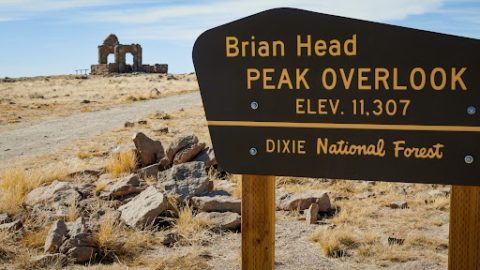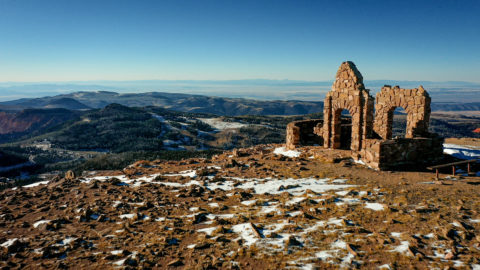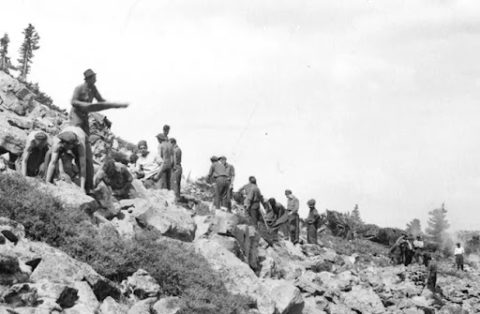Brian Head Overlook
 Nestled high above at over 11,000 feet, the Brian Head Overlook Tower stands as a sentinel over the vast landscape of Southern Utah. This historic structure, built between 1934-35 by the Civilian Conservation Corps (CCC), has weathered many storms over the decades, serving as both a recreational overlook and an occasional fire lookout. Its strategic vantage point offers panoramic views stretching across state lines, from Nevada’s Wheeler and Highland peaks to Arizona’s Mount Trumbull and Navajo Mountain, and beyond into the heart of Utah’s wilderness and the Markagunt Plateau.
Nestled high above at over 11,000 feet, the Brian Head Overlook Tower stands as a sentinel over the vast landscape of Southern Utah. This historic structure, built between 1934-35 by the Civilian Conservation Corps (CCC), has weathered many storms over the decades, serving as both a recreational overlook and an occasional fire lookout. Its strategic vantage point offers panoramic views stretching across state lines, from Nevada’s Wheeler and Highland peaks to Arizona’s Mount Trumbull and Navajo Mountain, and beyond into the heart of Utah’s wilderness and the Markagunt Plateau.

In recent years, the tower faced one of its most challenging moments when fierce winds, exceeding 80 mph during a snowstorm, stripped the roof from this iconic structure. The damage, a testament to the harsh conditions at such elevations, forced the urgent need for restoration to conserve this piece of history for future generations. Responding to this call, a collaborative effort between the U.S. Forest Service, the Zion Forever Project, and the Iron County Tourism Office (Visit Cedar City/Brian Head) was mobilized to restore the Brian Head Overlook tower.
The restoration project is a significant undertaking, with the U.S. Forest Service contributing $85,000 towards the efforts. Iron County has generously matched with $35,000, and the Zion Forever Project is working to raise an additional $50,000 needed to complete the work. This funding will ensure the site is professionally restored by trained archivists and skilled workers, with a focus on stabilizing the structure while retaining its historic characteristics.
 The Brian Head Overlook Tower’s restoration is a commitment to preserving a landmark that connects visitors not only with the breathtaking beauty of Southern Utah but also with its rich historical tapestry through the CCC. The collaboration between federal, local, and nonprofit entities underscores the communal spirit that values conservation and heritage, ensuring the tower continues to inspire awe and wonder at over 11,000 feet. This work is only possible with the support of donors and public land lovers like you.
The Brian Head Overlook Tower’s restoration is a commitment to preserving a landmark that connects visitors not only with the breathtaking beauty of Southern Utah but also with its rich historical tapestry through the CCC. The collaboration between federal, local, and nonprofit entities underscores the communal spirit that values conservation and heritage, ensuring the tower continues to inspire awe and wonder at over 11,000 feet. This work is only possible with the support of donors and public land lovers like you.
To support this project and our mission throughout the Zion Region, click HERE.
